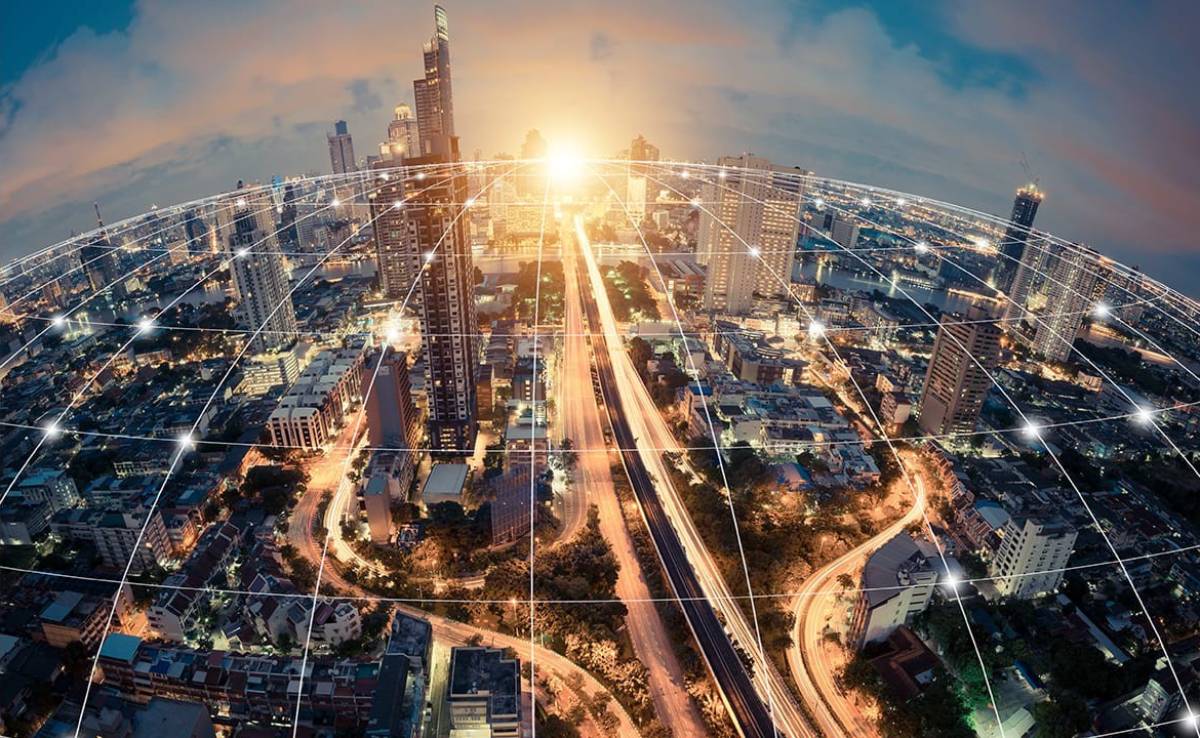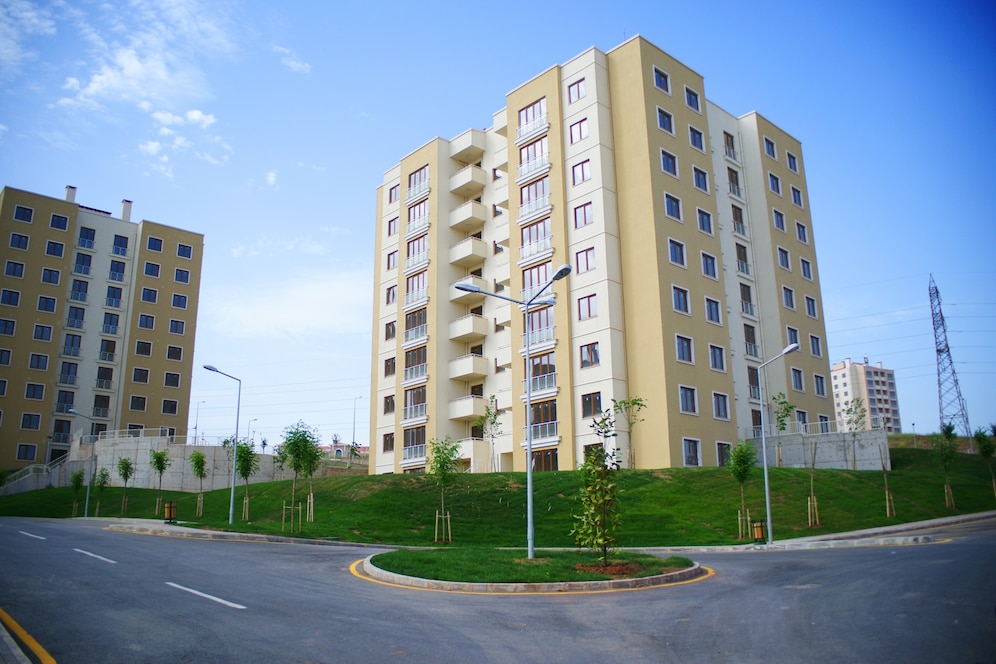
Smart Cities: How Technology is Shaping Urban Living
Smart cities are changing how we think about urban development. They offer new solutions for the challenges of city life today. As cities grow and populations rise, the need for efficient, sustainable, and high-tech infrastructure becomes vital. Smart cities use technology to improve life for residents. They also make better use of resources and promote sustainability.
Technology in urban planning isn’t just a future idea—it’s a must. Technology is changing how cities work. Cities are becoming more responsive, efficient, and eco-friendly. They use real-time traffic management and IoT waste collection. This blog looks at the benefits, processes, and future of smart cities. It shows how technology is changing urban life.
Why It Matters

1. Improved Efficiency and Connectivity
Smart cities use technology and data to improve urban services and infrastructure. Cities can use IoT devices and sensors to collect and analyse data in real time. This helps them improve their operations.
Why It Matters:
- Smart traffic management: Real-time traffic data helps cities adjust signal timings. This cuts down congestion and travel times.
- Efficient energy use: Smart grids track and control energy flow. This cuts waste and supports sustainability.
- Automated public services: Smart systems improve services such as waste collection, parking management, and public transport. This makes cities more efficient and easier for users.
2. Sustainability and Environmental Impact
A key goal of smart cities is to lower their environmental impact. Smart cities help create a greener future. They achieve this by using energy-efficient solutions, managing waste better, and using renewable energy sources.
Why It Matters:
- Smart lighting systems: Automated street lights save energy by dimming or turning off when streets are empty.
- Smart water management: IoT sensors detect leaks and optimise water distribution, reducing waste.
- Renewable Energy Integration: Smart cities focus on using solar panels, wind turbines, and energy storage. This helps cut down on fossil fuels.
3. Enhanced Quality of Life
By leveraging technology, smart cities enhance livability and convenience for residents. Improved public safety, healthcare access, and better transport all boost the quality of life.
Why It Matters:
- Public safety: Smart surveillance systems and AI-powered crime detection enhance security.
- Healthcare access: Telemedicine and smart healthcare let people get remote diagnosis and monitoring. This improves public health services.
- Smart public transport: Real-time updates and app-based ticketing make commuting easier and more efficient.
4. Data-Driven Decision Making
Smart cities harness big data to make informed decisions. City planners can spot issues and make data-driven policies by analysing patterns and trends.
Why It Matters:
- Predictive maintenance: Sensors spot wear and tear. This helps with proactive maintenance and cuts repair costs.
- Optimised urban planning: Data insights help governments create better transport networks, use resources wisely, and enhance city designs.
5. Citizen Engagement and Participation
Smart cities encourage citizens to get involved using digital platforms. This lets residents take part in decision-making. Mobile apps and online platforms allow people to report issues, share feedback, and access public services.
Why It Matters:
- Greater transparency: Digital platforms promote open governance, enhancing public trust.
- Community involvement: Residents can take part in budgeting decisions. This lets them shape how public money is spent.
- Real-time feedback: Authorities can respond swiftly to public concerns, improving service delivery.
Step-by-Step Guide to Building Smart Cities

Step 1: Identify Urban Challenges
Before implementing smart solutions, cities must identify their key challenges. This involves:
- Assessing infrastructure inefficiencies (e.g., traffic congestion, pollution, or public service gaps).
- Conducting surveys and data analysis to understand the specific needs of residents.
- Set clear goals for the smart city project. Focus on improving transport and cutting carbon emissions.
Step 2: Develop a Strategic Plan
After identifying the challenges, city planners must create a strategic roadmap that includes:
- Technological requirements: IoT networks, data analytics platforms, and cloud infrastructure.
- Partner with tech providers: Work with technology firms and startups to create and apply solutions.
- Budget allocation and funding: Get funding from government grants, private investors, or public-private partnerships (PPPs).
Step 3: Implement Smart Infrastructure
The next step is to deploy smart infrastructure tailored to the city’s specific needs. Key components include:
- Smart transportation systems: Real-time traffic monitoring, ride-sharing integration, and automated public transport.
- Energy-efficient grids: Smart meters and renewable energy systems to optimise electricity consumption.
- Smart waste management: IoT bins alert when they need emptying, improving waste collection routes.
Step 4: Ensure Data Security and Privacy
Data privacy and security are paramount in smart cities. To safeguard sensitive information:
- Implement encryption and cybersecurity protocols.
- Comply with data protection regulations to protect residents’ privacy.
- Use anonymised data for analytics to prevent misuse of personal information.
Step 5: Monitor and Optimise Performance
Continuous monitoring and evaluation are essential for fine-tuning smart city systems. This involves:
- Real-time analytics: Use data dashboards to monitor infrastructure performance.
- Adjusting services: Modify operations based on data insights to enhance efficiency.
- Public feedback: Gather citizen feedback to improve user experience and address issues.
Additional Expert Tips & Common Mistakes to Avoid
Expert Tips
- Launch pilot projects first: Try out smart solutions in a limited area before rolling them out across the city.
- Access open data platforms: Let startups and developers use public data to spark innovation.
- Focus on sustainability: Make sure smart city projects support eco-friendly goals and lower the city’s carbon footprint.
- Invest in talent development: Train city officials and residents to use smart technologies effectively.
Common Mistakes to Avoid
- Neglecting citizen engagement: Excluding citizens from the planning process can lead to resistance and dissatisfaction.
- Overlooking interoperability: Smart city systems must be compatible with existing infrastructure.
- Poor data privacy measures: Not using strong cybersecurity can cause data breaches.
- Lack of long-term vision: Smart cities require sustainable, long-term strategies, not short-term fixes.
Advanced Insights

1. The Role of Artificial Intelligence (AI) in Smart Cities
AI is becoming a cornerstone of smart city operations, enabling:
- Predictive analytics: AI forecasts urban space challenges, such as traffic congestion or water shortages.
- Automation: AI-driven systems automate waste management, energy distribution, and transportation.
- Enhanced public safety: AI-powered surveillance improves crime detection and emergency response.
2. The Integration of 5G Networks
5G technology is transforming smart cities by:
- Improving connectivity: Faster, more reliable communication between IoT devices.
- Supporting real-time data processing: Enhancing the speed and accuracy of smart city operations.
- Enabling autonomous vehicles: Low-latency connections allow for safer, more efficient self-driving vehicles.
3. Sustainability-Focused Initiatives
Smart cities will increasingly prioritise eco-friendly infrastructure through:
- Solar-powered public transport.
- Green roofs and urban forests to reduce the heat island effect.
- Circular economy initiatives to promote recycling and reduce waste.
The Future of Smart Cities
Smart cities are the future of urban living. They provide new solutions that improve efficiency, sustainability, and quality of life. Cities can use urban technology and data to solve major problems. These include congestion, pollution, and managing resources.
As technology improves, smart cities will be more connected and eco-friendly. This will lead to urban areas that are safer, greener, and more efficient. The future of city life depends on blending technology with a focus on people’s well-being.
How do you envision smart cities shaping the future of urban living? Share your thoughts in the comments below!

